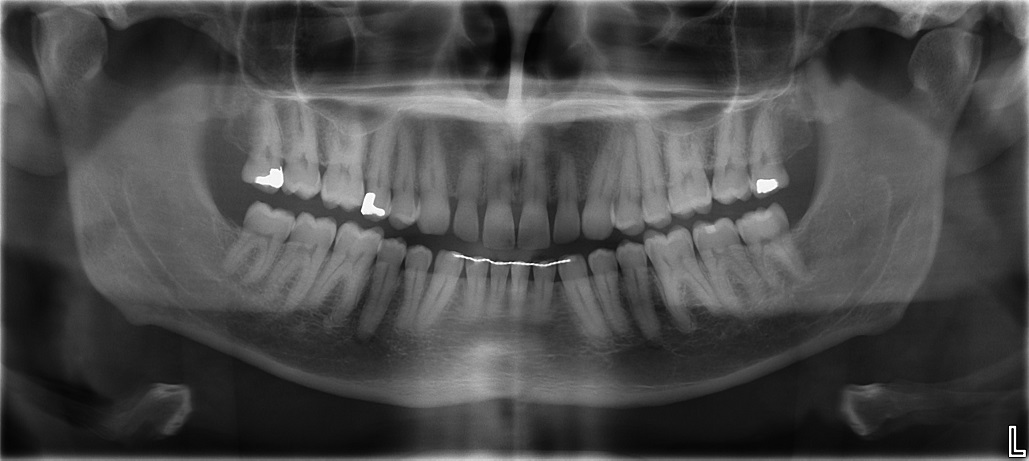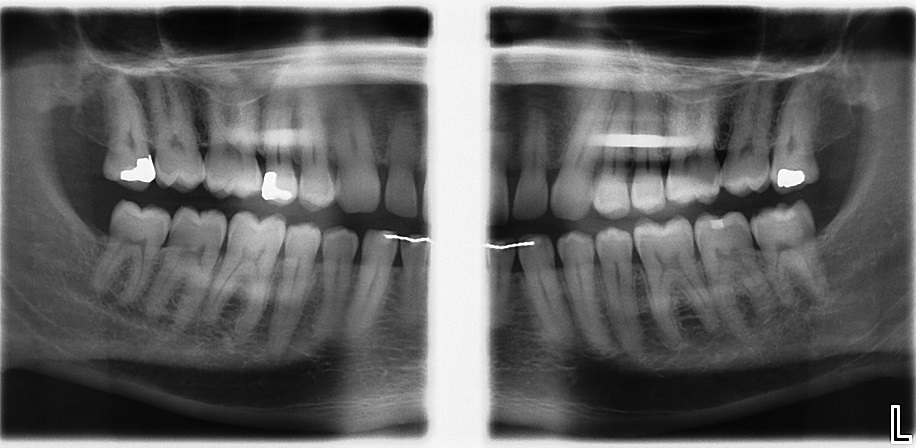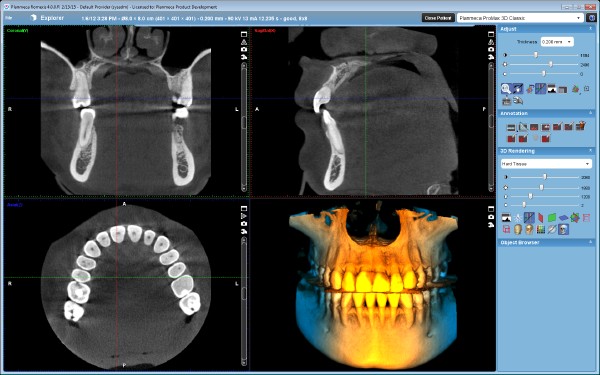Digital X-Rays
Compared to conventional x-rays that used the little square films, digital x-rays require three to four times less patient radiation exposure to produce, making them safer. Instead of having to wait for those little films to develop in a bath of hazardous chemicals, digital x-rays are available for immediate viewing. To help identify pathology, digital x-rays can be altered with software to enhance a feature or to provide a direct comparison view between the new radiograph and an older one.
Also, these digital x-rays are invaluable tools for patient education. Instead of having to make a patient peer at a little tiny square of film on a light-box, the dentist can now pull up the digital x-rays on a computer monitor or television to illustrate the problem the patient presents with, and explain a plan to take care of it.
What’s more, digital x-rays are easily and securely stored for future use with a modern computer networking system, so the digital images always look as sharp and detailed as the day they were captured.
At Blake Dentistry, we have an array of dental x-ray technology at our disposal.
Standard Digital Intraoral Sensor
The standard digital intraoral sensor provides a standard two-dimensional view. Think of these as the digital picture equivalent of the old-school, tiny films you might remember from dental visits in the past.
When you have this type of digital x-ray taken, it will seem a lot like those old-school films in that you’ll have to bite on a sensor in order to produce the image. But the image the digital sensor provides is much more focused on the problem areas or the areas of interest.
 Intraoral Bitewings
Intraoral Bitewings
PlanMeca ProMax
Our PlanMeca ProMax unit can produce two-dimensional x-rays with a much broader focus, such as panoramic x-rays and extraoral bitewings. This means that in most situations, we can now produce those routine bitewings without making you bite on a sensor! This is great news for those with small mouths who have trouble managing the standard intraoral sensor, as well as for those with highly responsive gag reflex! Also, the extraoral bitewings require less radiation to produce than the standard intraoral sensor.
 Panoramic
Panoramic
 Extraoral Bitewings
Extraoral Bitewings
PlanMeca ProMax 3-D
On the cutting-edge of dental radiography, our PlanMeca ProMax unit is also capable of producing three-dimensional images. This type of radiograph is not typically used for detecting cavities, but is an ace for picking up on smaller or more challenging pathologies.
The PlanMeca ProMax 3-D capability gives 3D information about the patient’s bone, nerves, blood vessels, airway problems, and pathology: essential information when it comes to detecting the position of anatomic structures prior to surgery such as extractions or placement of a dental implant, minimizing the chance of operative or post-operative problems.
Most of these images can be produced with up to 77% less radiation exposure than a standard panoramic film.
 3D Conebeam
3D Conebeam
Office Hours
Monday8:00 am - 5:00 pm
Tuesday8:00 am - 5:00 pm
Wednesday8:00 am - 5:00 pm
Thursday 8:00 am - 5:00 pm
Friday Closed
Saturday/Sunday Closed
Contact Us
507 Dwight Street, Coudersport, PA 16915
Call 814.274.7262

